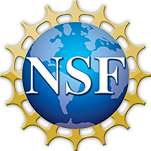Deep bottom water was sampled in 2012 and 2014 via a CTD at 100 m above the seafloor and filtered in the same manner as the crustal fluids onto Sterivex filters.
| URL | https://www.bco-dmo.org/dataset/782058 |
|---|---|
| Download URL | https://www.bco-dmo.org/dataset/782058/data/download |
| Media Type | text/tab-separated-values |
| Created | November 19, 2019 |
| Modified | December 2, 2019 |
| State | Final no updates expected |
| Brief Description | Reconstructed genomes from North Pond |
Acquisition Description
Ribosomal rRNA identification and relative abundance
From the high-quality paired-end Illumina sequencing reads, 16S rRNA gene fragments were identified using Meta-RNA (Huang et al., 2009; v.H3; -e 1e-10). Putative rRNA fragments and associated mate pairs from each sample were processed through EMIRGE (Miller et al., 2011, 2013); emirge_amplicon.py; -l 113 -i 163 -s 33 -a 32 —phred33) to generate full-length sequences using the SILVA (Quast et al., 2012) SSURef111 reference database (https://github.com/csmiller/EMIRGE). Reconstructed 16S rRNA genes were assigned taxonomy using mothur (v1.34.4) by first aligning the sequences to the SILVA SSURef123 database (align.seqs; flip=T), removing sequences that failed to align, if necessary (remove.seqs), and classifying the sequences (classify.seqs; cutoff=80, iters=1000).
Processing Description
BCO-DMO Processing Notes:
– added conventional header with dataset name, PI name, version date
– modified parameter names to conform with BCO-DMO naming conventions
Instruments
Fluid systems were flushed and allowed to equilibrate before sampling, and dissolved oxygen concentrations were measured during pumping using an Aanderaa sensor (Meyer et al., 2016).
After sampling in 2012, a battery-powered GeoMICROBE sled was left at each CORK for time series autonomous sampling of the fluid delivery lines (Cowen et al., 2012).
Integrated Ocean Drilling Program borehole CORK (Circulation Obviation Retrofit Kit) observatories provide long-term access to hydrothermal fluids circulating within the basaltic crust (basement), providing invaluable opportunities to study the deep biosphere. We describe the design and application parameters of the GeoMICROBE instrumented sled, an autonomous sensor and fluid sampling system. The GeoMICROBE system couples with CORK fluid delivery lines to draw large volumes of fluids from crustal aquifers to the seafloor. These fluids pass a series of in-line sensors and an in situ filtration and collection system. GeoMICROBE’s major components include a primary valve manifold system, a positive displacement primary pump, sensors (e.g., fluid flow rate, temperature, dissolved O2, electrochemistry-voltammetry analyzer), a 48-port in situ filtration and fluid collection system, computerized controller, seven 24 V-40 A batteries and wet-mateable (ODI) communications with submersibles. This constantly evolving system has been successfully connected to IODP Hole 1301A on the eastern flank of the Juan de Fuca Ridge.
Reference: Cowen, J.P., Copson, D., Jolly, J., Hsieh, C.-C., Matsumoto, R., Glazer, B.T. et al. (2012) Advanced instrument system for real-time and time-series microbial geochemical sampling of the deep (basaltic) crustal biosphere., Deep-Sea Research I, 61: 43-56 doi:10.1016/j.dsr.2011.11.004
Total microbial biomass in fluids was enumerated with DAPI (4′,6′-diamidino-2-phenylindole; Sigma-Aldrich, St Louis, MO, USA) and epifluorescent microscopy (Porter and Feig, 1980).
Instruments that generate enlarged images of samples using the phenomena of fluorescence and phosphorescence instead of, or in addition to, reflection and absorption of visible light. Includes conventional and inverted instruments.
Fluids also were analyzed for dissolved silicon and nitrate using automated colorimetric analysis and pH was measured with an electrode before a potentiometric titration for the determination of alkalinity (Wheat et al., 2017).
Parameters
Dataset Maintainers
| Name | Affiliation | Contact |
|---|---|---|
| Julie A. Huber | Marine Biological Laboratory (MBL) | ✓ |
| Peter R. Girguis | Marine Biological Laboratory (MBL) | ✓ |
| Brian T. Glazer | Harvard University | |
| Brian T. Glazer | Harvard University | |
| Shannon Rauch | University of Hawaii at Manoa (SOEST) | |
| Shannon Rauch | University of Hawaii at Manoa (SOEST) |
BCO-DMO Project Info
| Project Title | Collaborative Research: Characterization of Microbial Transformations in Basement Fluids, from Genes to Geochemical Cycling |
|---|---|
| Acronym | North Pond Microbes |
| URL | https://www.bco-dmo.org/project/554914 |
| Created | April 3, 2015 |
| Modified | August 29, 2019 |
Project Description
Description from NSF award abstract:
Current estimates suggest that the volume of ocean crust capable of sustaining life is comparable in magnitude to that of the oceans. To date, there is little understanding of the composition or functional capacity of microbial communities in the sub-seafloor, or their influence on the chemistry of the oceans and subsequent consequences for global biogeochemical cycles. This project focuses on understanding the relationship between microbial communities and fluid chemistry in young crustal fluids that are responsible for the transport of energy, nutrients, and organisms in the crust. Specifically, the PIs will couple microbial activity measurements, including autotrophic carbon, nitrogen and sulfur metabolisms as well as mineral oxide reduction, with quantitative assessments of functional gene expression and geochemical transformations in basement fluids. Through a comprehensive suite of in situ and shipboard analyses, this research will yield cross-disciplinary advances in our understanding of the microbial ecology and geochemistry of the sub-seafloor biosphere. The focus of the effort is at North Pond, an isolated sediment pond located on ridge flank oceanic crust 7-8 million years old on the western side of the Mid-Atlantic Ridge. North Pond is currently the target for drilling on IODP expedition 336, during which it will be instrumented with three sub-seafloor basement observatories.
The project will leverage this opportunity for targeted and distinct sampling at North Pond on two German-US research cruises to accomplish three main objectives:
1. to determine if different basement fluid horizons across North Pond host distinct microbial communities and chemical milieus and the degree to which they change over a two-year post-drilling period.
2. to quantify the extent of autotrophic metabolism via microbially-mediated transformations in carbon, nitrogen, and sulfur species in basement fluids at North Pond.
3. to determine the extent of suspended particulate mineral oxides in basement fluids at North Pond and to characterize their role as oxidants for fluid-hosted microbial communities.
Specific outcomes include quantitative assessments of microbial activity and gene expression as well as geochemical transformations. The program builds on the integrative research goals for North Pond and will provide important data for guiding the development of that and future deep biosphere research programs. Results will increase understanding of microbial life and chemistry in young oceanic crust as well as provide new insights into controls on the distribution and activity of marine microbial communities throughout the worlds oceans.
There are no data about microbial communities in ubiquitous cold, oceanic crust, the emphasis of the proposed work. This is an interdisciplinary project at the interface of microbial ecology, chemistry, and deep-sea oceanography with direct links to international and national research and educational organizations.
Data Project Maintainers
| Name | Affiliation | Role |
|---|---|---|
| Julie A. Huber | Marine Biological Laboratory (MBL) | Lead Principal Investigator |
| Peter R. Girguis | Harvard University | Principal Investigator |
| Brian T. Glazer | University of Hawaii at Manoa (SOEST) | Principal Investigator |

